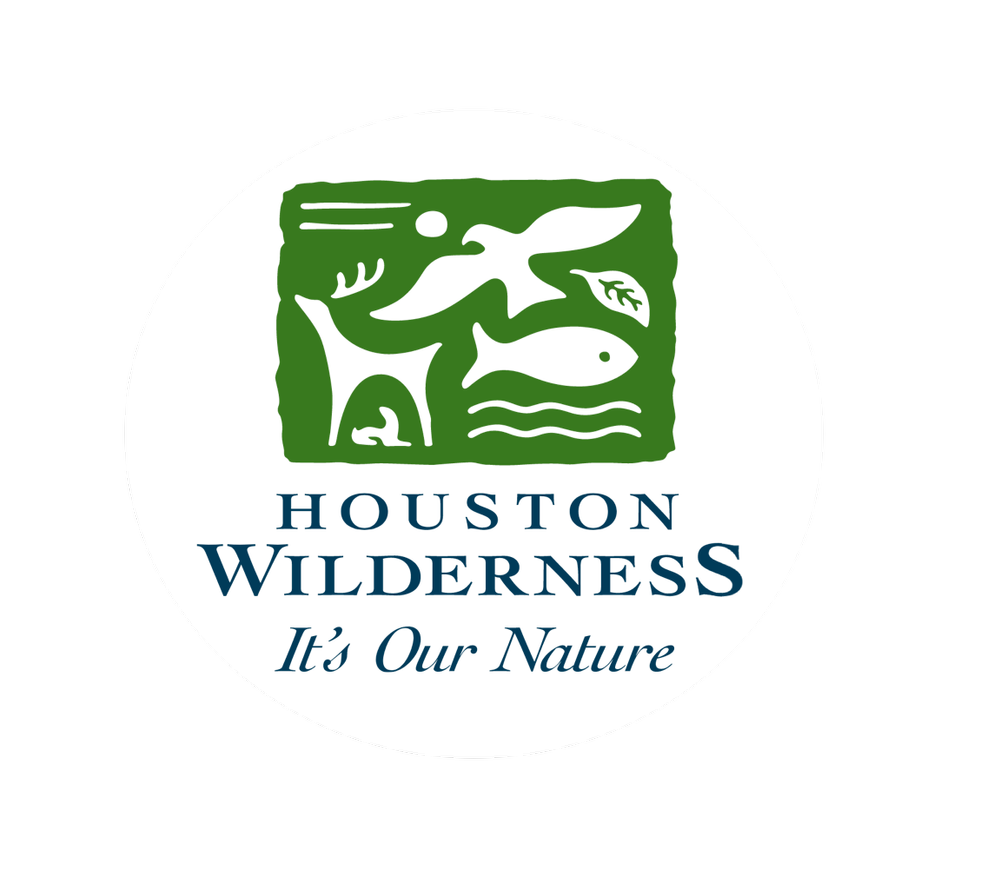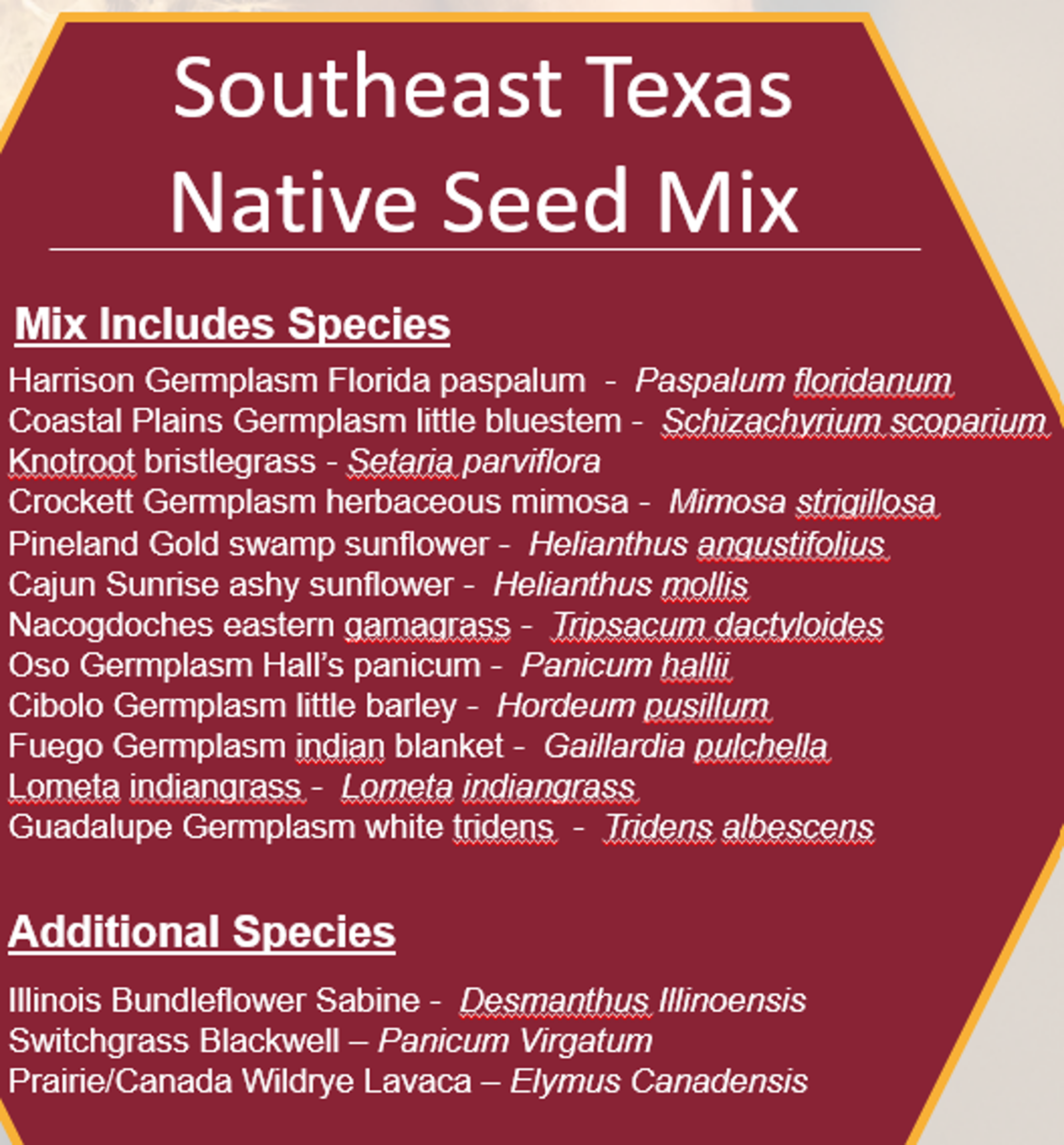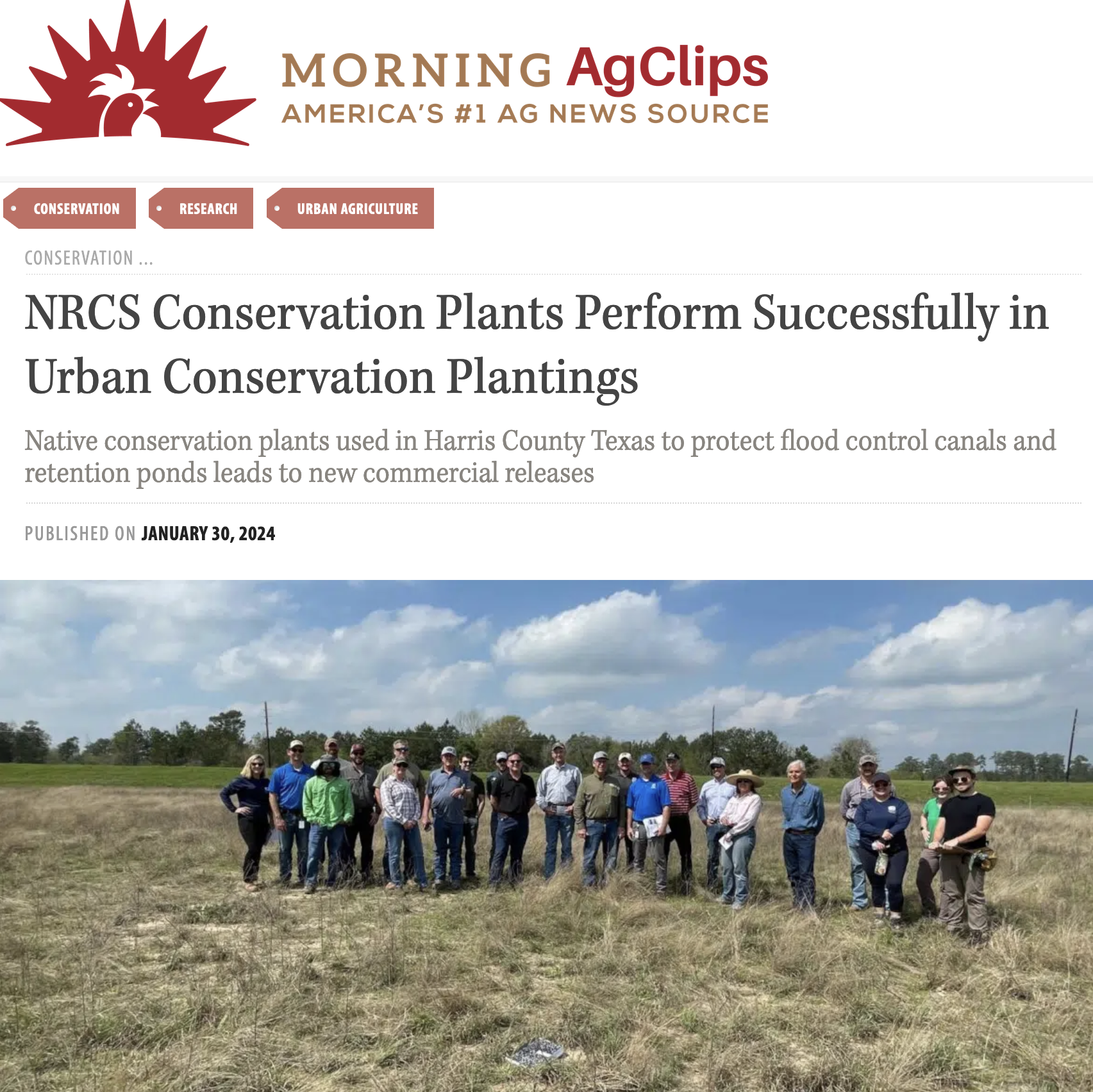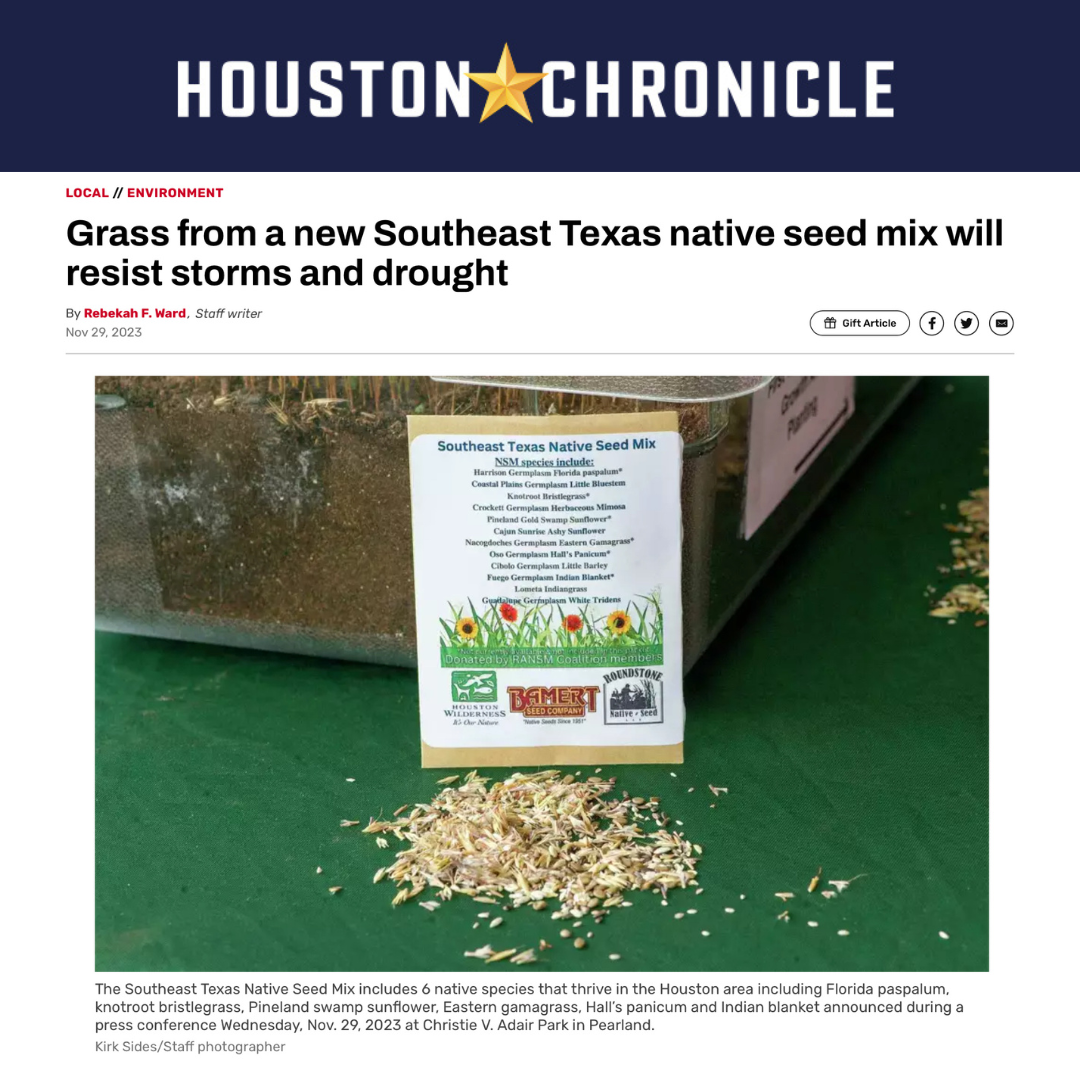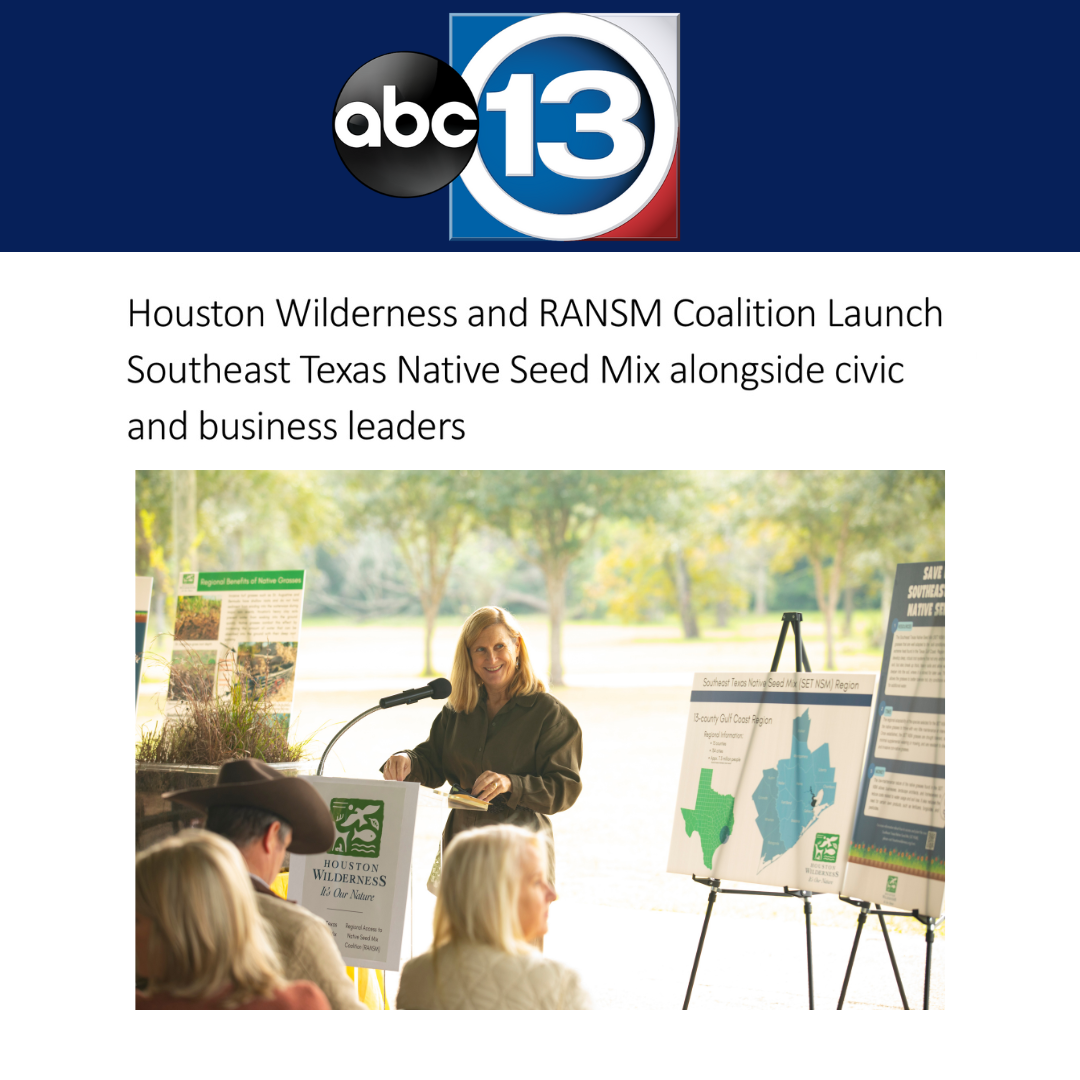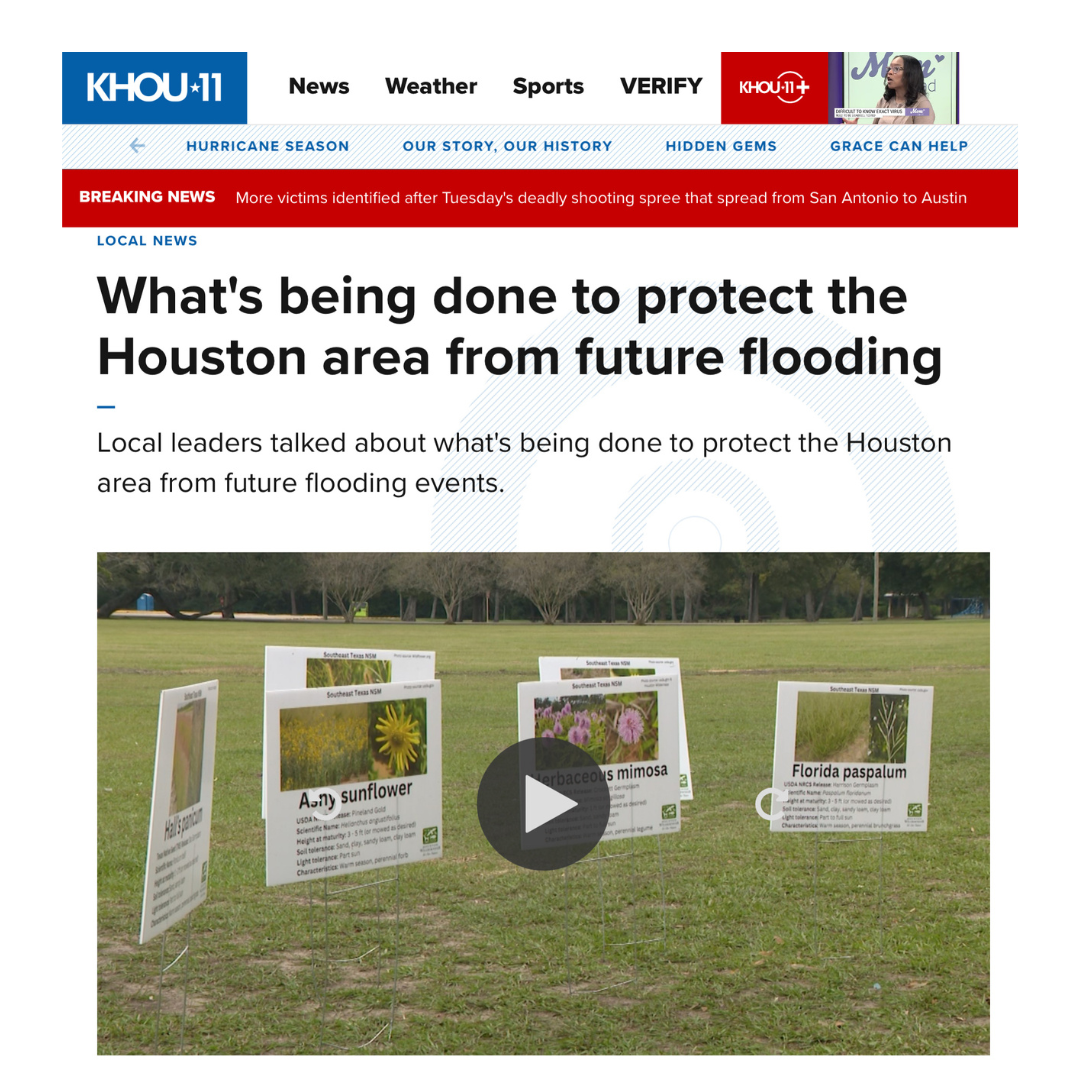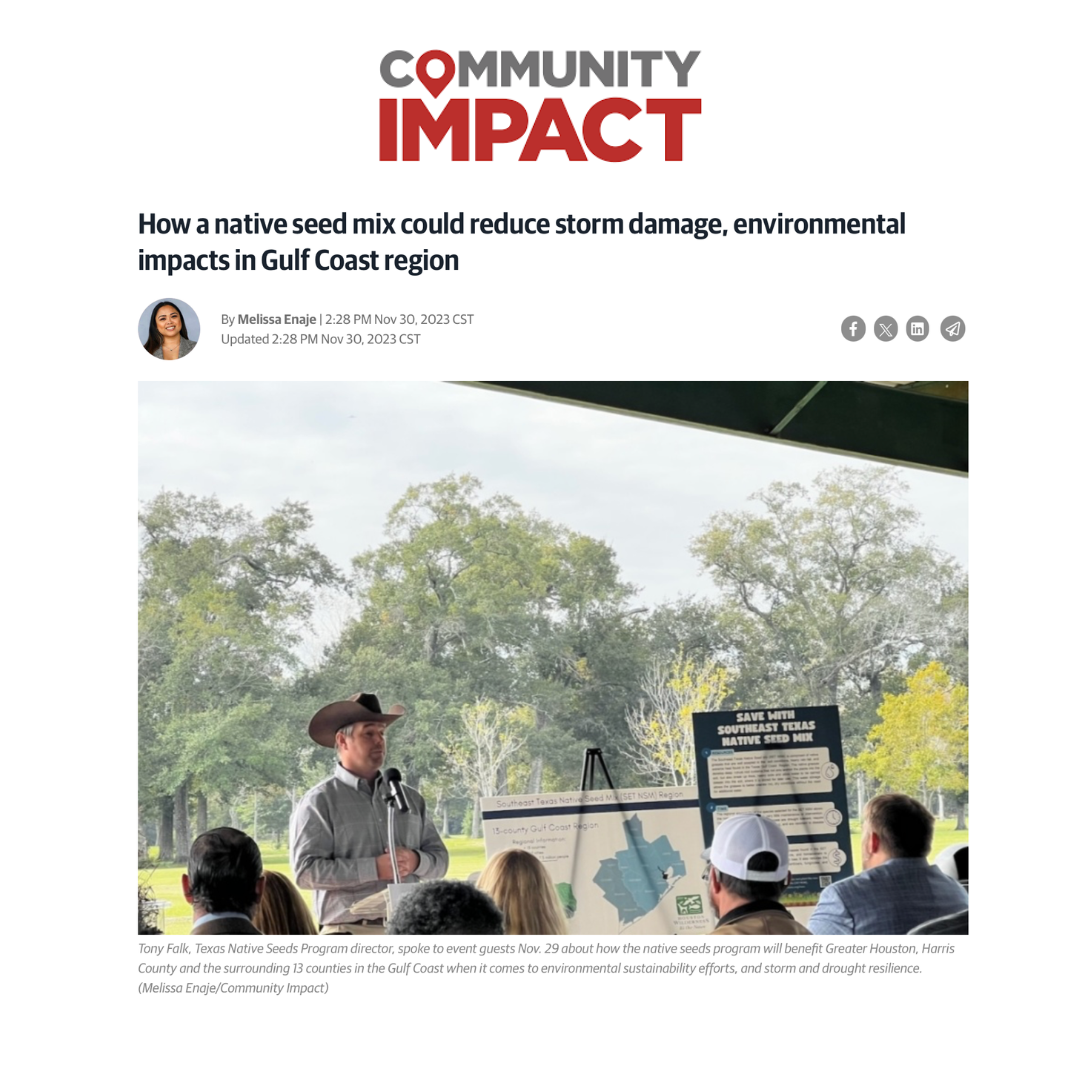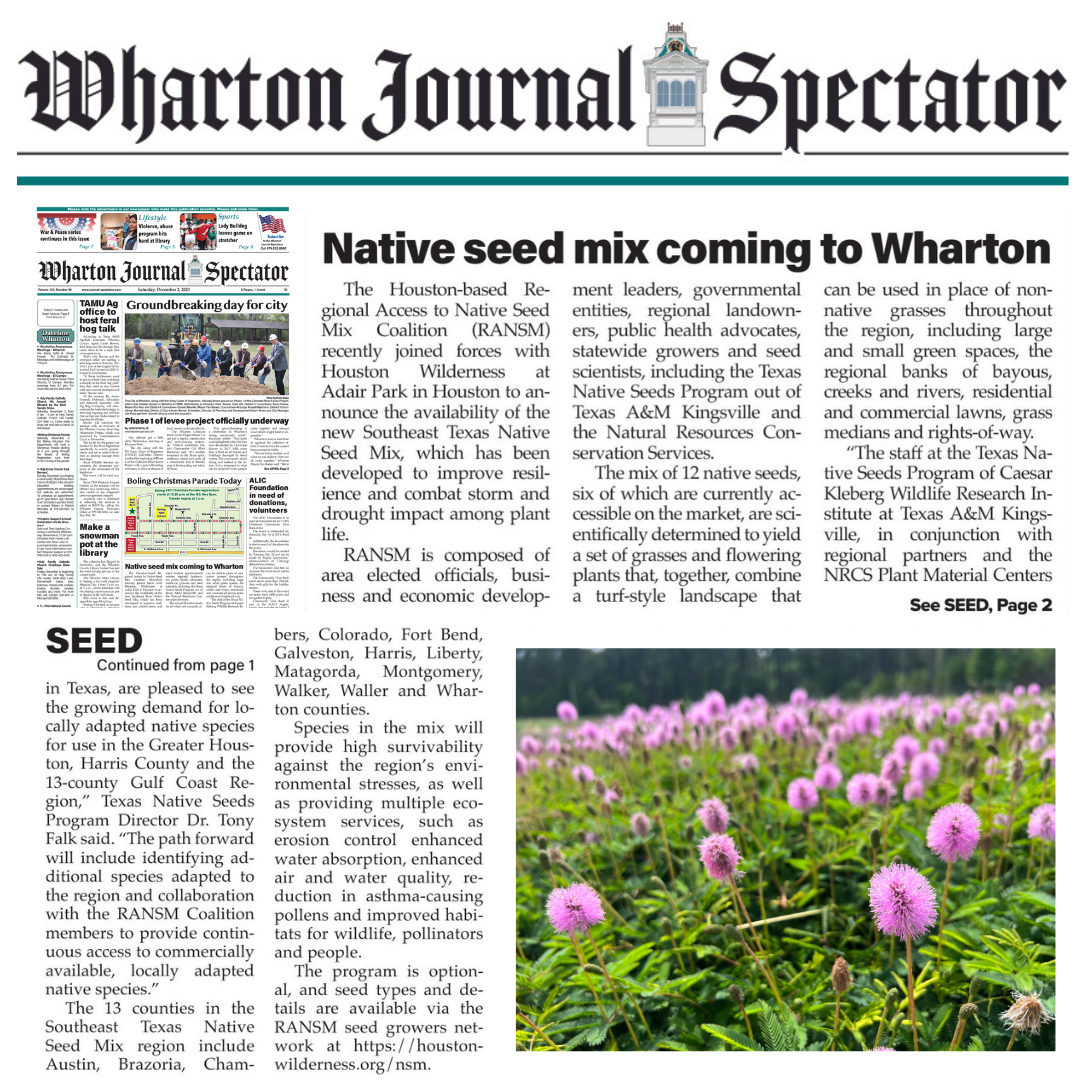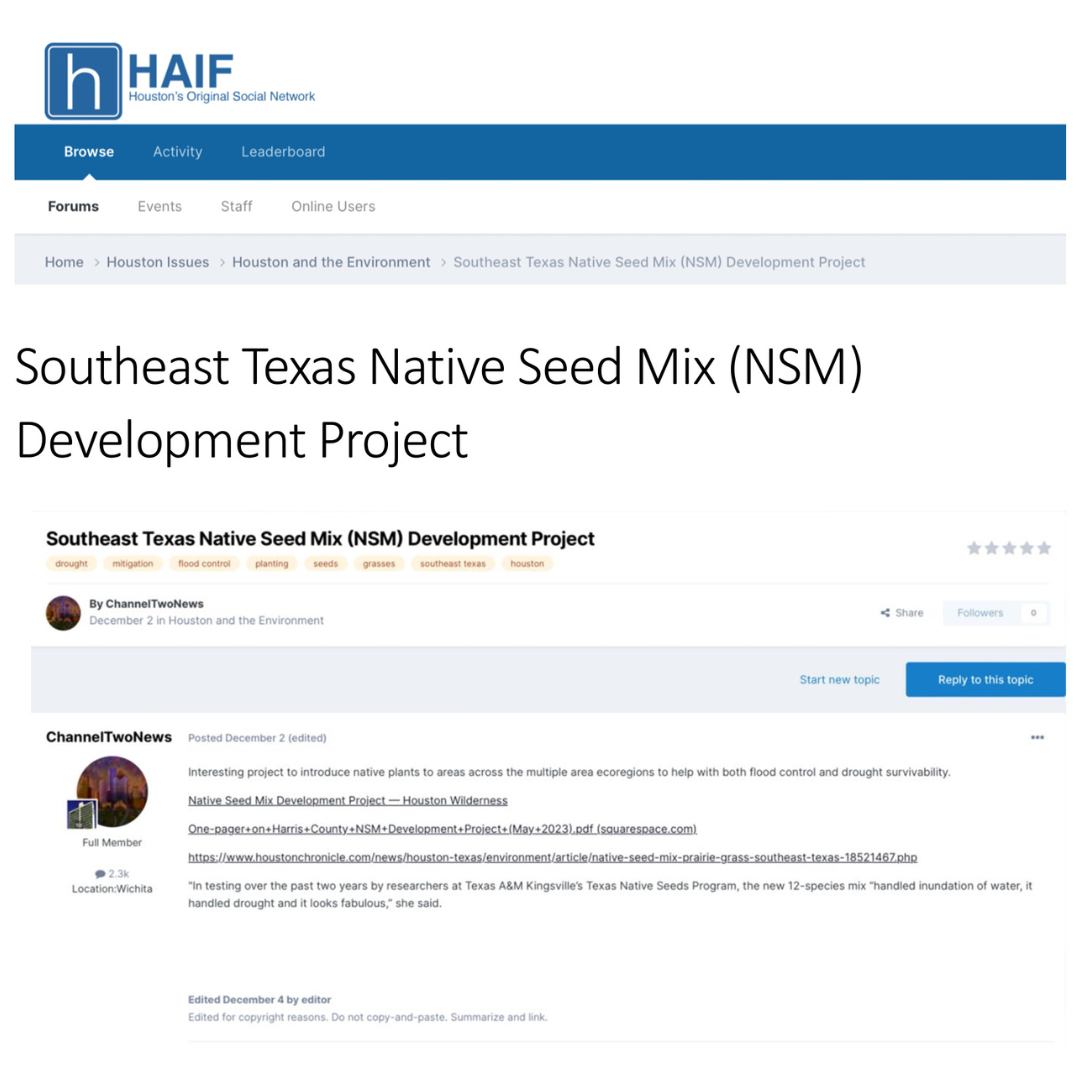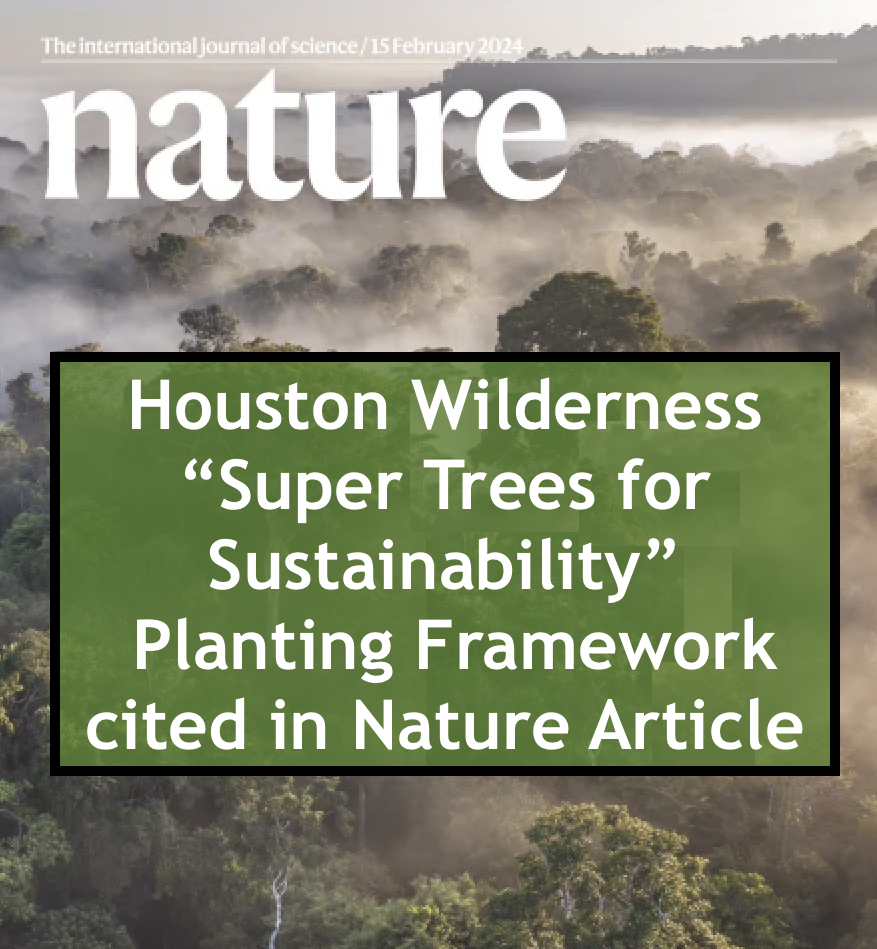Southeast Texas Native Seed Mix Initiative
(facilitated by the RANSM Coalition)
The Southeast Texas Native Seed Mix (SET NSM) Initiative is facilitated by Houston Wilderness with a collaborative of interested large landscape stakeholders and Texas seed growers called the RANSM Coalition to assist with access to and communication about the collection of native grass seeds that can be grown in the 15+ County Gulf-Houston Region to provide green space that replaces non-native grasses around the region. When used around the region , the 12 Southeast Texas Native Seed Mix species will provide high survivability against the region’s environmental stresses, and provide multiple ecosystem services for this region.
INFORMATIONAL VIDEO
The SET NSM was developed for large scale properties/projects and not specifically for residential landscaping applications at this time (although it can be used in place of non-natives on small properties as well). Since the SET NSM was created in late 2023, conversion of non-native grasses to the SET NSM on large landscapes is a “work in progress” and will take 3-6 years to be applied at large scales throughout the region. Meanwhile, meadowscaping is an option that can be used at small or large scale.
Order SET NSM from these Texas seed growers:
Bamert Seed (1-806-639-5232)
Douglas King Seeds (210-963-5869)
Roundstone Native Seed (888-531-2353)
Turner Seed (254-559-2065)
Native American Seed (Southeast Recovery Mix)
ABOUT THE RANSM COALITION
Formed in 2023 and facilitated by Houston Wilderness to assist with access to and communication about the newly-created collection of native grasses that can be grown in the 8-county Gulf-Houston Region, the Regional Access to Native Seed Mix (RANSM) Coalition is comprised of major stakeholders in the region including large-scale NSM buyers, users and Texas native seed growers. The 4 key priorities of the RANSM Coalition include:
Collaboration on a strategy for short-term and long-term supply of the Southeast Texas NSM for large scale projects applications (for smaller-scale applications, try meadowscaping)
Implementation of the SET NSM on large scale projects
Engagement in communications on the existence of and widespread opportunities for use of the SET NSM
Provide educational information on the use of the SET NSM as a replacement for non-native grasses
FOR LARGE LANDSCAPE/GREEN SPACE BUYERS JOIN THE RANSM COALITION
For questions about the RANSM Coalition, contact info@houstonwilderness.org
